Today we use a huge number of services and applications not only for work, but also for personal purposes. All of these tools are designed to make our lives easier, and many of them do an excellent job. But at the same time, there are many organizational and administrative operations. We transfer data from one system to another, perform regular checks (for example, monitor leads on Facebook or track new rows in Google Sheets). With the expansion of the technology stack, routine operations can become one of the main “eaters” of time. This problem can be solved with the help of special no-code tools for automating workflows. Let's try to compare two bright representatives of this niche — Zapier and Integromat.
What is Integromat?
Integromat is a cloud-based integration platform for implementing automation. The project was launched in the Czech Republic in 2016. In February 2022, the rebranding process took place. Now the popular platform for setting up integrations is called “Make”. However, many customers and users continue to use the old name.
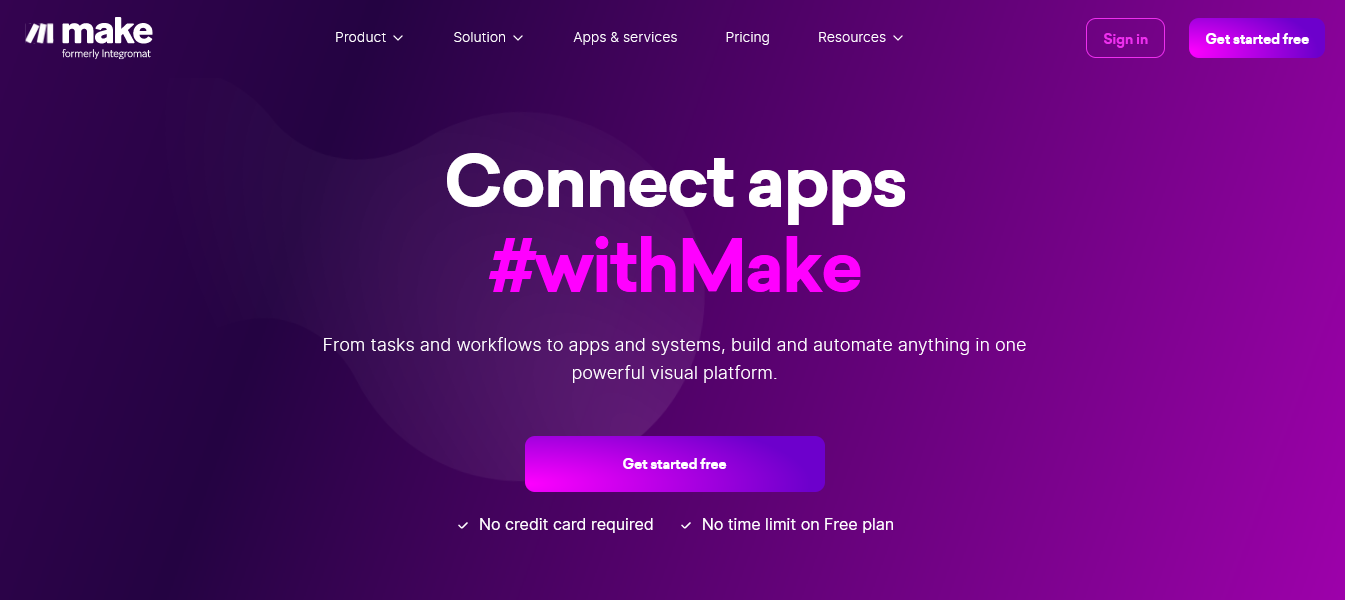
The Integromat service provides users with a Drag-and-Drop format editor in which they can create and configure various automated processes. The integration platform allows you to connect 1000+ services and applications. These can be not only simple integrations for two systems, but also complex chains with branches, filters, data formatting, etc.
A simple scenario is created in a few steps:
- Selection of applications to be combined;
- Setting up a scenario (connecting accounts, choosing a trigger, actions, etc.);
- Scenario testing;
- Launching an automated process.
Each chain node in Integromat (Make) is called a module. The simplest communication consists of two systems, one of which is the source of data and the other is the destination. The Make platform interface allows you to build complex relationships with a large number of modules. Users can easily add additional applications, as well as filters, routers, and other controls. Also among the convenient features is the ability to add notes. This is useful for describing an automated process — creating a kind of documentation and comments.
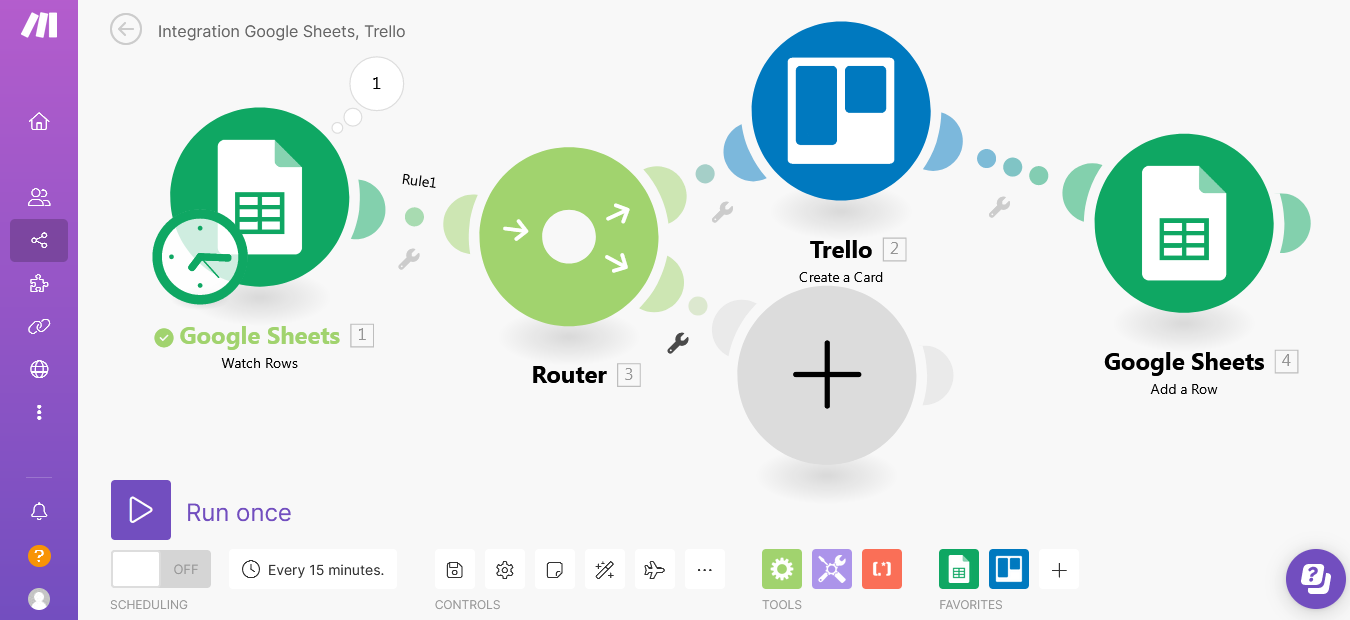
To test the scenario, you must click the "Run once" button. The user can analyze the state and stages of operation of the integration elements. Once the automated process has been verified, the communication interval must be selected. The finished integration appears in the scenarios list. The user can always switch to the editing mode, as well as change the data update interval, copy or delete the link in a few clicks.
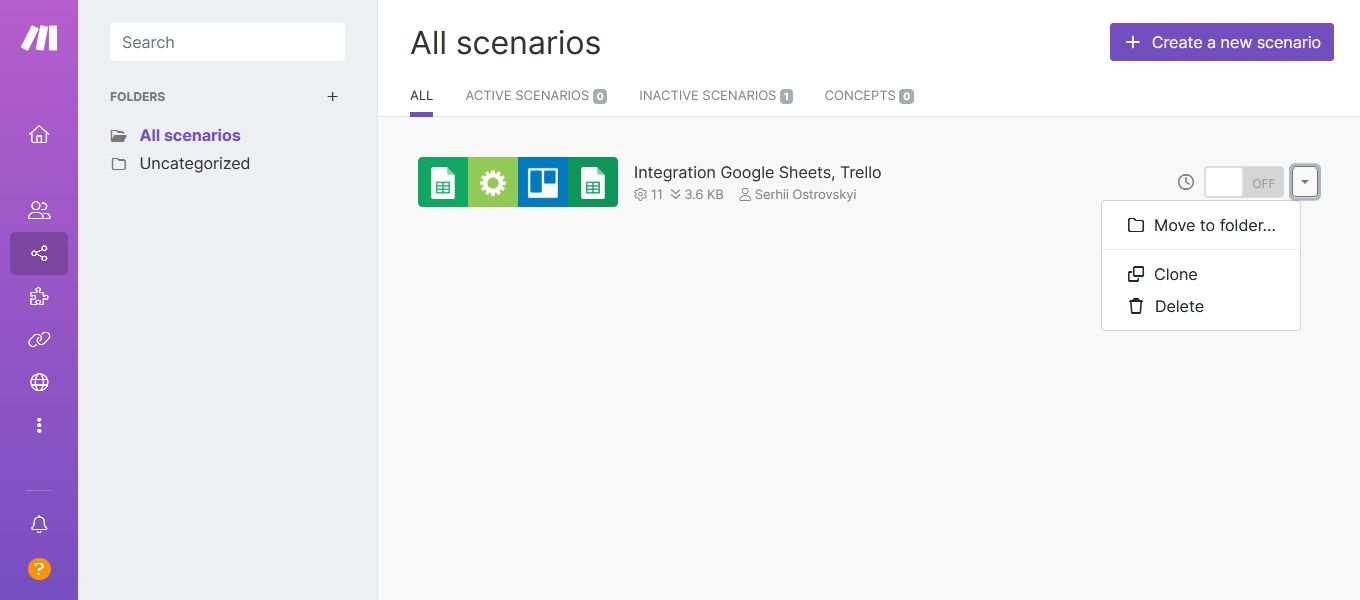
What Is Zapier?
Zapier is a pioneer in the market of no-code services for integrations and workflow automation. The project originated at the Startup Weekend Columbia site in 2011, and the following year received its first development funding. Zapier from the start of its existence has focused on the remote work format. At the beginning of 2022, the company had 500 employees worldwide. The platform allows you to connect 5000+ services and applications, which is the best indicator among competitors.

Zapier is considered the industry leader. The connection-integration on the platform is called Zap. The principle of setting up an automated process is extremely simple and fundamentally no different from the approach in the Make integrator. It is necessary to connect services participating in the integration, select a trigger and an action. Work in Zapier is carried out in a simple linear format. The system offers a sequence of actions in which it is difficult to get confused. At different stages, the connection is checked. For example, the trigger and the target data loading process are being tested.
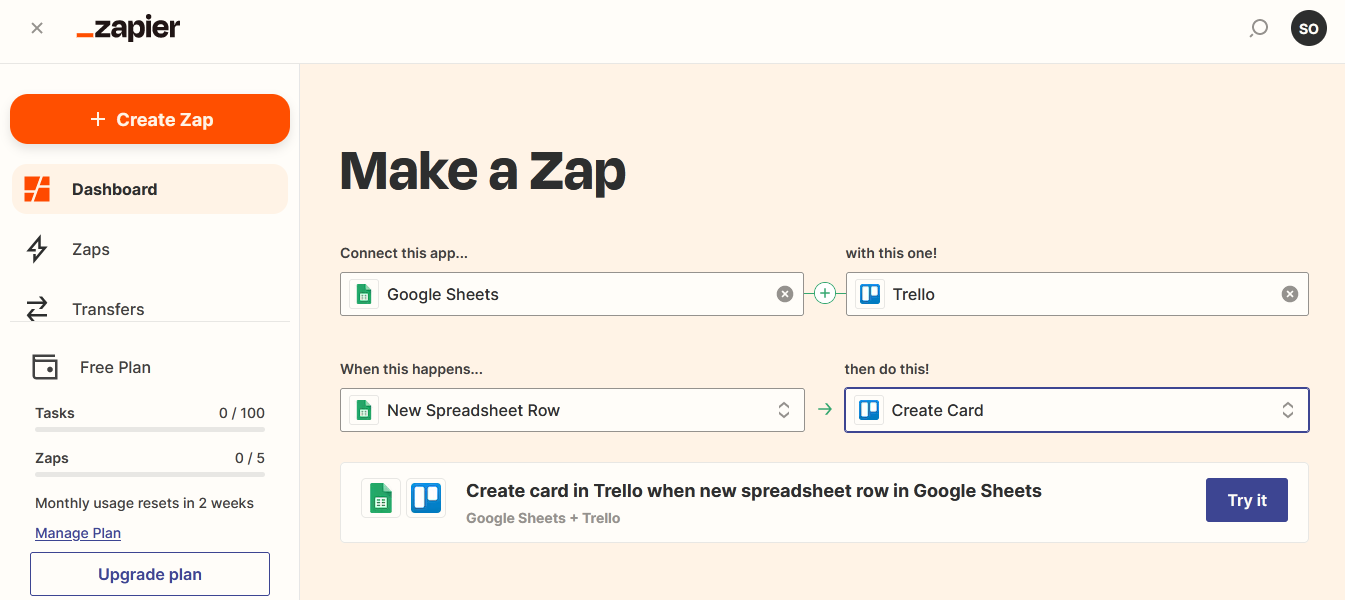
When setting up an action on the side of the receiving service, you can operate on variables that correspond to data from the source. Here everything takes place in a classic format. Users are presented with a list of variables that can be used and assigned to fields in the receiving system. When all necessary communication parameters are defined, the action is tested. After that, the configured integration is saved by clicking on the “Publish Zap” button.
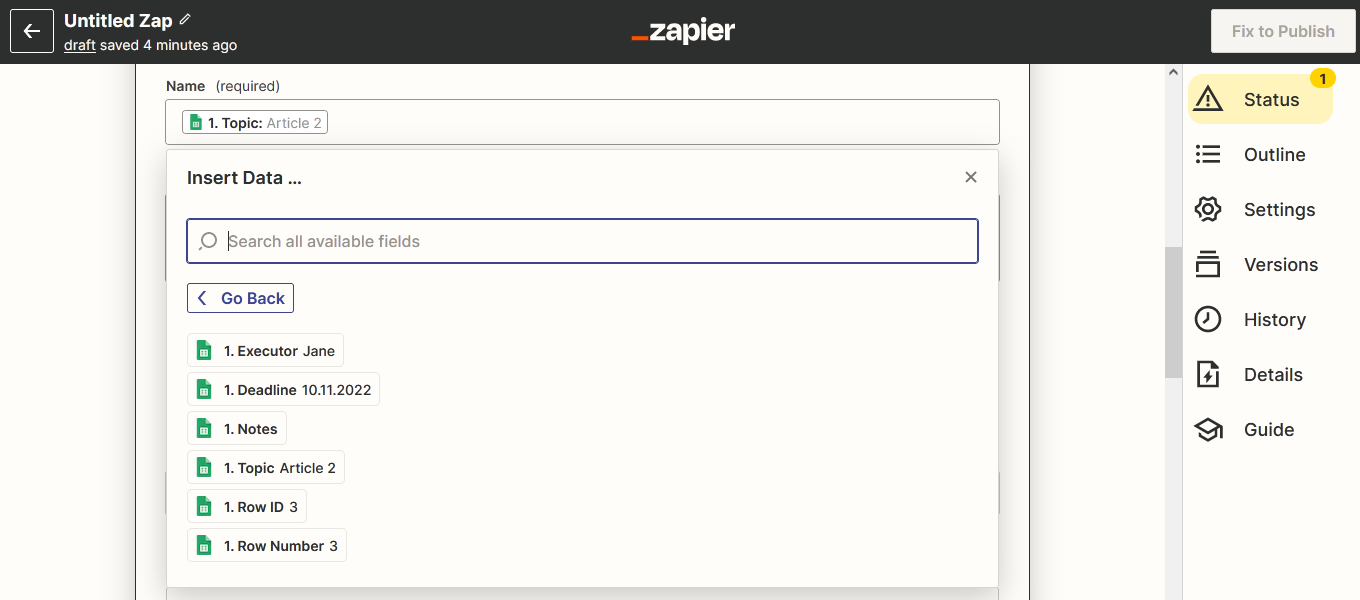
The created Zap is displayed in the list of integrations in your account. The user can quickly operate his automatic processes: delete, enable/disable, duplicate, edit, etc.
Zapier vs Integromat: Functionality
Both Zapier and Make (Integromat) are leaders in the no-code toolbox for building your own integrations. One of the main goals of these services is to simplify the configuration processes so that as many users as possible without special skills and knowledge can easily implement automation and get rid of manual work. Both services offer convenient and functional personal cabinets. Provides quick access to scenarios/Zaps and management tools. Users are offered lists of templates for an easy start.
What additional functionality does the Zapier platform have? Naturally, we will not be able to talk about all the features of both systems, but we will focus on some interesting features. The Zapier platform has a whole set of built-in tools that allow you to create the most customized and powerful automated process. This functionality is being supplemented and some features are in beta testing mode.
Let's take a look at some interesting tools from Zapier:
Paths — functionality for building branched integrations. This tool takes incoming information and analyzes the data. If a certain condition is met, the integration runs along the appropriate path.
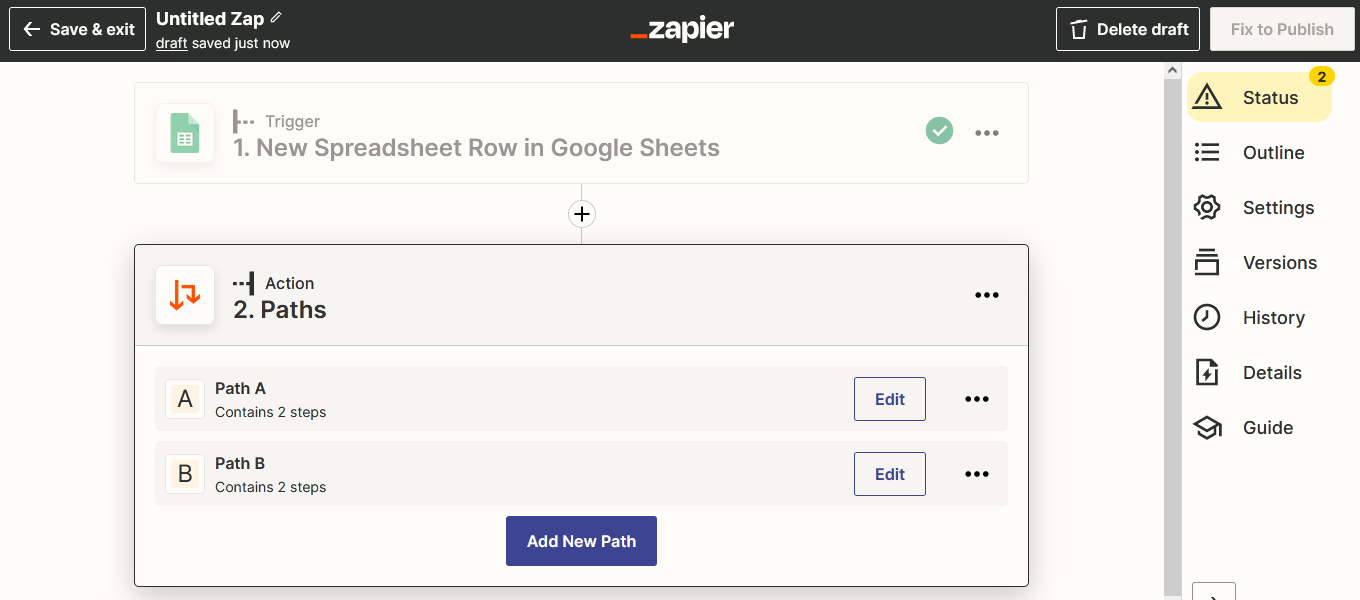
Filter is a tool for filtering information. This feature allows you to efficiently work with the incoming data stream, passing only those that match the specified conditions. For example, you want to receive new tasks from Google Sheets if your name is in the “assignee” cell.
Webhooks — a tool that helps create automated workflows for apps that aren't listed by Zapier. Interceptors can connect to web resources that support this technology in order to receive/transmit the necessary data.
Storage is a solution for managing user data storage.
Delay is a function to set a delay for a certain stage of the workflow.
Schedule — functionality for setting a schedule for launching a specific action.
- Automate the work with leads from the Facebook advertising account
- Empower with integrations and instant transfer of leads
- Don't spend money on developers or integrators
- Save time by automating routine tasks
This is only part of the capabilities of the Zapier platform, but it is also clear from this that the service allows you to customize processes for almost any task.
How will Make (Integromat) respond to its competitor? This platform also has a very impressive functionality. Like Zapier Integromat offers a wide range of additional tools for fine-tuning automated processes. Let's look at some of them:
Router is a module that allows you to create branches. In each branch of the process, information is processed according to its own algorithm. For example, after the router, you can add a data filter to work with only certain information. You can also implement an IF/ELSE condition.
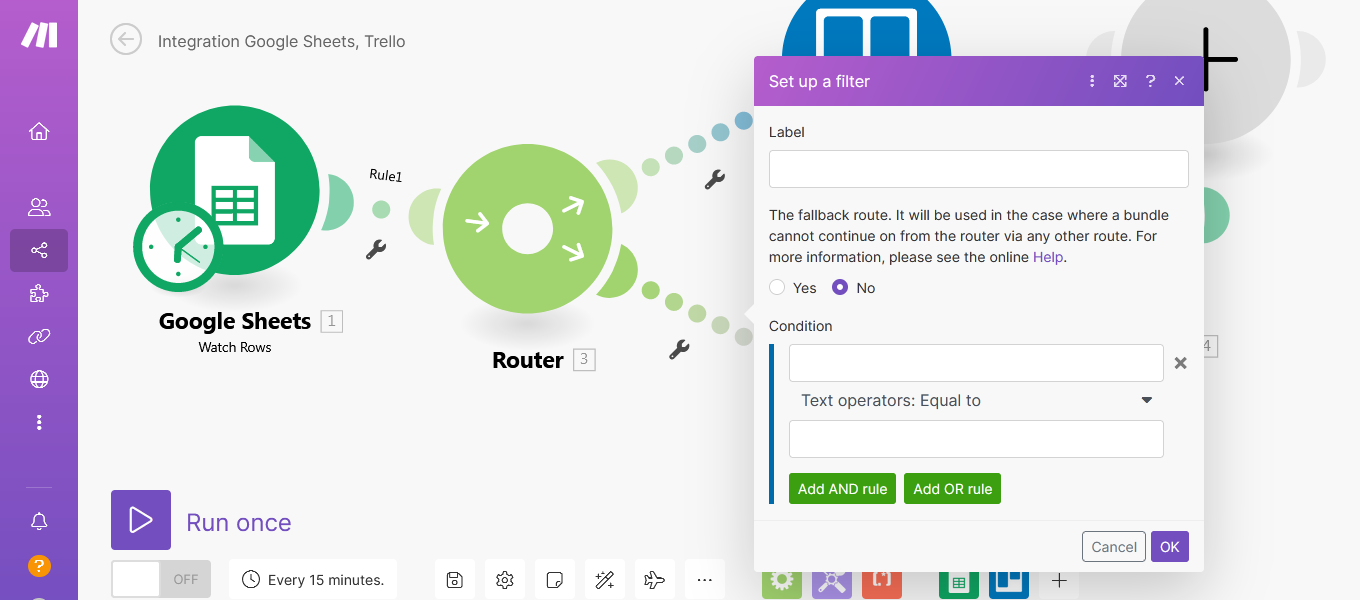
Repeater is a tool for running tasks a certain number of times. With this function, you can implement cyclic repetition of operations.
Iterator is a module for converting an array of data into individual elements.
Array aggregator is a module for converting a set of entities into a single data array.
Data store is a solution for storing user data. The user can manage the database records and use them in his scenarios.
Also in the Integrator platform, you can make notes for modules, work with the JSON format, and much more.
Main differences
We have already seen that Zapier and Integromat provide a wide range of functionality for building and configuring various automated processes. For the vast majority of tasks, both platforms have solutions. Zapier has significantly more declared systems, but Make also has an impressive number of them, which makes it possible to connect all the services and applications that are in demand. The difference may appear in the case of the use of specific and relatively rare tools.
Significant differences are observed in the user interface. Zapier offers a simpler linear representation of the relationship. At the same time, Make focuses on the maximum visualization of the process. Each of these options has its pros and cons.
Among the advantages of the Zapier interface is an intuitive setup process that is broken down into steps. It is easy for the user to create integrations by following the prompts step by step. Thus, Zapier can prove to be a good choice for beginners.
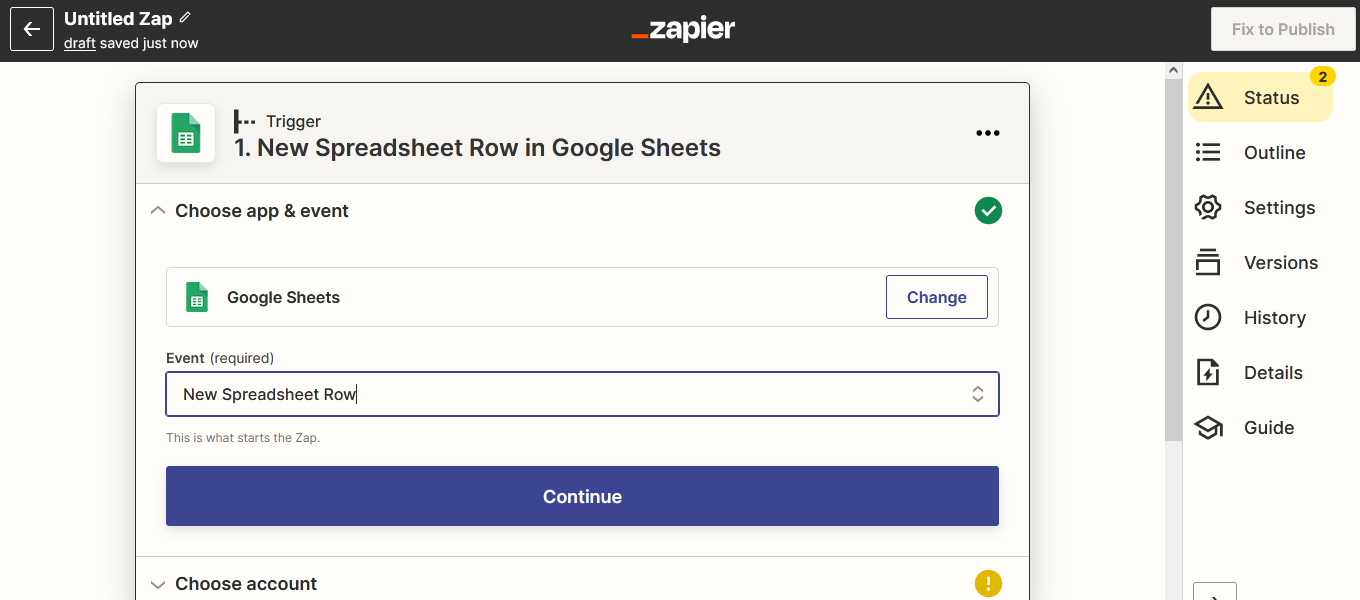
As for complex branching relationships with a large number of nodes and additional tools, they are also effectively configured in Zapier. But managing large multi-layered processes in this platform will be somewhat more difficult than in the Make editor. Due to the detailed visualization, Integromat (Make) users get the opportunity to conveniently work with scenarios of any complexity. You can easily scale the automated process to analyze it completely, work with individual communication segments or customize certain modules.
In general, both top players in the automation platform market offer excellent functionality and a well-thought-out interface. But we can say that Zapier has a lower entry threshold, and Integromat is more convenient when working with complex scenarios. Naturally, there are many more nuances — Zapier has a better implementation of the delay function, Integromat allows you to easily add comments, etc. But such moments are difficult to put on the scales so that one of them outweighs exactly.
Integromat vs Zapier: Pricing
Let's look at the pricing plans of the platforms. The indicated prices are valid for annual payment.
Zapier pricing plans.
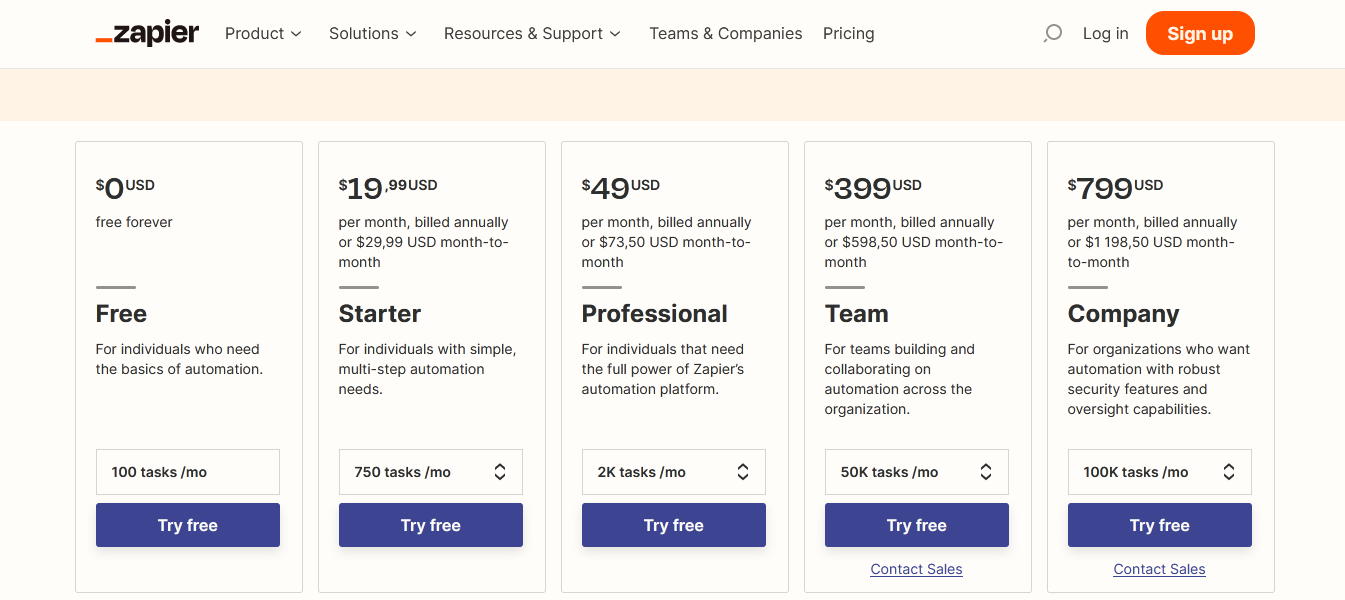
Tariff plans Make.
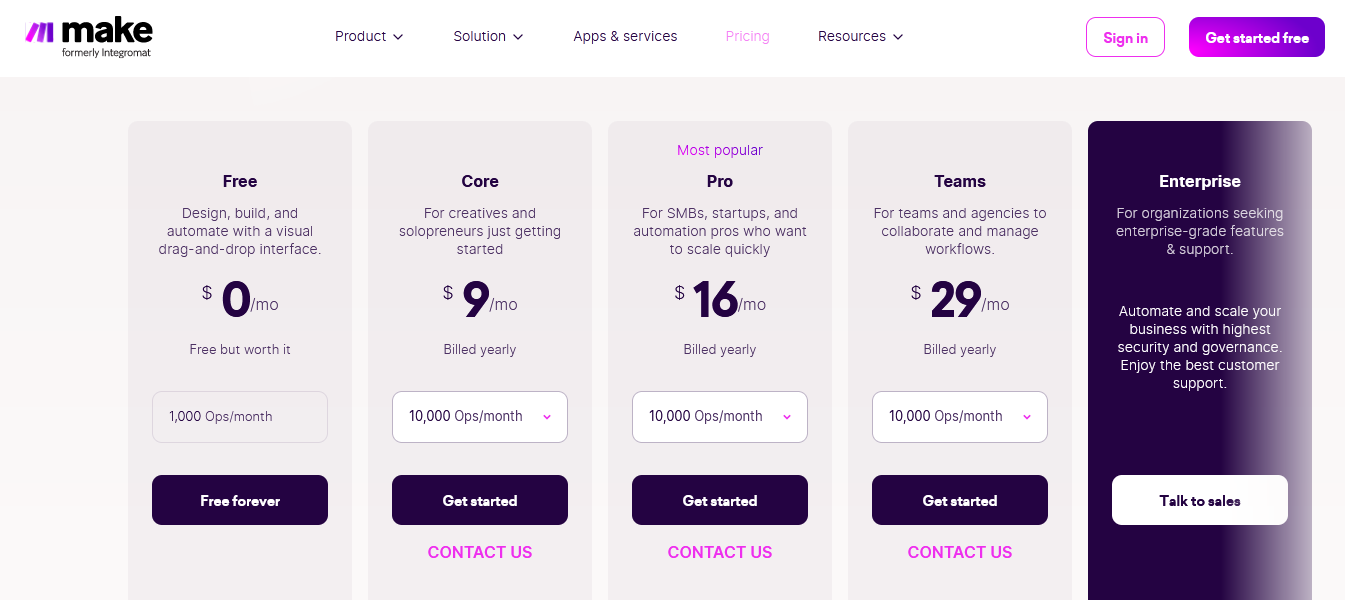
Both platforms offer free packages. Let's compare the main parameters:
- Integromat (Free) — 1000 Ops/month, 2 scenarios, minimum data update interval 15 minutes, you can build complex scenarios.
- Zapier (Free) — 100 tasks/month, 5 Zaps, minimum data update interval 15 minutes, only simple one-step integrations can be built.
Zapier offers more integrations, but Integromat is significantly more profitable in terms of the number of operations and the ability to build multi-stage scenarios.
It is clear to the naked eye that Make has a more democratic approach to pricing. The “Pro” package is cheaper than the “Starter” package on the Zapier platform. Let's compare tariff plans that are positioned as a solution for professional users:
- Integromat (Pro) — $16/month, 10,000 Ops/month, minimum update interval 1 minute, unlimited scenarios.
- Zapier (Professional) — $49/month, 2000 tasks/month, minimum update interval 2 minutes, unlimited Zaps.
Final thoughts
Zapier and Integromat are rightfully the top representatives in the market of platforms for setting up integrations and automating workflows. It is difficult to choose a clear winner in this pair. Some will like the Zapier interface and a large number of available applications, some will prefer high-quality visualization of the process from Integromat, and a number of users will focus solely on the price. We can definitely say that the demand for such tools is actively growing, so Zapier and Make are confidently increasing their client base.
If you don't want to, or don't have the time to understand big platforms like Zapier and Integromat, there are alternatives. Our SaveMyLeads service was created exclusively to work with Facebook Lead Ads. If your regular task is to check new leads in the FB advertising account, upload data and transfer it to other systems (CRM, Email services, etc.), try using our tool. We have ready-made templates for popular services and applications. The principle of creating integrations is extremely simple and takes about 5 minutes. Try a free 14-day trial and experience your workflow without having to constantly verify your Facebook account, upload CSV files, or manually migrate your data.
Don't waste another minute manually transferring leads from Facebook to other systems. SaveMyLeads is a simple and effective tool that will allow you to automate this process so that you don't have to spend time on the routine. Try SaveMyLeads features, make sure that this tool will relieve your employees and after 5 minutes of settings your business will start working faster.

